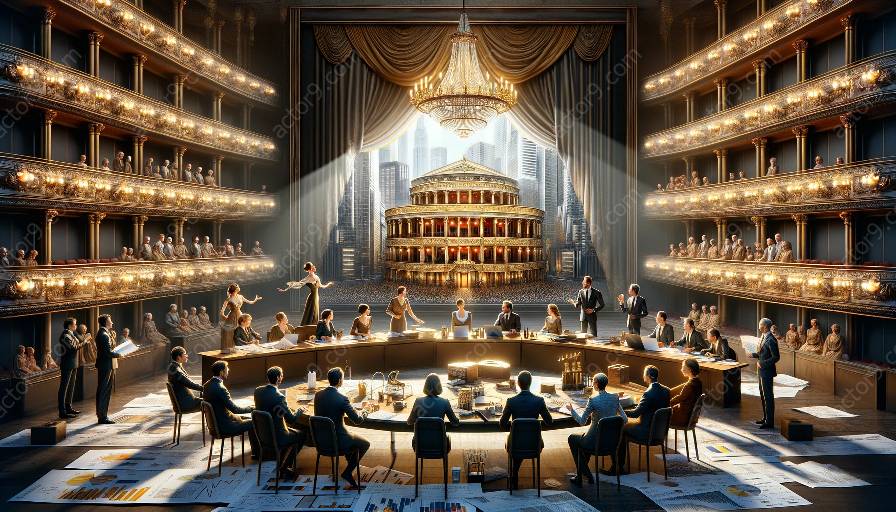Opera theater facilities play a crucial role in delivering exceptional opera performances. Effective management of these facilities and infrastructure involves a combination of strategic planning, efficient operations, and a focus on enhancing the audience experience. In this topic cluster, we will delve into the best practices for managing opera theater facilities and infrastructure, aiming to support the overall success of opera performance and management.
Understanding the Role of Opera Theater Facilities and Infrastructure
Opera theater facilities encompass a wide range of elements, including the physical building, stage equipment, lighting systems, acoustics, seating arrangements, and more. Infrastructure relates to the supporting systems, such as HVAC, electrical, and plumbing, that are fundamental for maintaining a functional and safe environment. The seamless coordination of these elements is essential to ensure that the performances run smoothly and that the audience experiences the highest level of artistry and comfort.
Best Practices for Opera Theater Facility Management
To effectively manage opera theater facilities, the following best practices can be implemented:
- Regular Maintenance: Establishing routine maintenance schedules for all facilities and infrastructure components is essential to prevent unexpected breakdowns that could disrupt performances. This includes equipment inspections, cleaning, and general upkeep.
- Efficient Resource Utilization: Implementing energy-efficient technologies and practices, such as LED lighting and HVAC optimization, not only reduces operational costs but also contributes to sustainability efforts.
- Adherence to Safety Regulations: Ensuring compliance with safety standards and regulations is paramount for the well-being of both performers and audiences. Regular safety inspections and staff trainings should be conducted to maintain a secure environment.
- Accessibility and Inclusivity: Designing the facilities with accessibility and inclusivity in mind is crucial. This includes providing adequate seating for individuals with disabilities, implementing hearing assistance systems, and offering various viewing options to accommodate diverse audience needs.
- Integration of Technology: Harnessing technological advancements can elevate the audience experience. This includes implementing state-of-the-art sound and projection systems, streaming capabilities, and interactive digital interfaces.
- Effective Space Utilization: Optimizing the layout and design of backstage areas, dressing rooms, and storage spaces is crucial for facilitating smooth operations for performers and staff.
- Reliable Technical Systems: Implementing robust technical infrastructure, including high-performance stage rigging, reliable communication systems, and flexible audiovisual setups, is critical for delivering seamless performances.
- Sustainable Practices: Embracing sustainable infrastructure practices, such as waste reduction, efficient water management, and eco-friendly materials, can contribute to the overall environmental stewardship of the opera theater.
- Collaborative Planning: Engaging with production teams, technical crews, and performers in the planning and design of sets, props, and technical elements enhances the overall coordination and execution of performances.
- Emergency Preparedness: Developing comprehensive emergency response plans, including backup power systems and contingency protocols, ensures that performances can continue even in unforeseen circumstances.
Enhancing Infrastructure Management for Opera Performances
Infrastructure management goes hand in hand with facility management, and both are integral to the success of opera performances. The following best practices can contribute to effective infrastructure management:
Conclusion
Efficient management of opera theater facilities and infrastructure is essential for creating an environment that fosters exceptional opera performances. By implementing the best practices outlined in this topic cluster, opera theater management can elevate the overall experience for both artists and audiences, contributing to the success and longevity of opera as a performing art.































